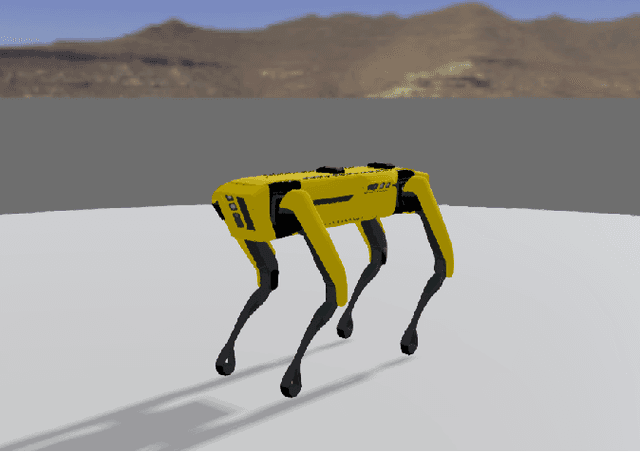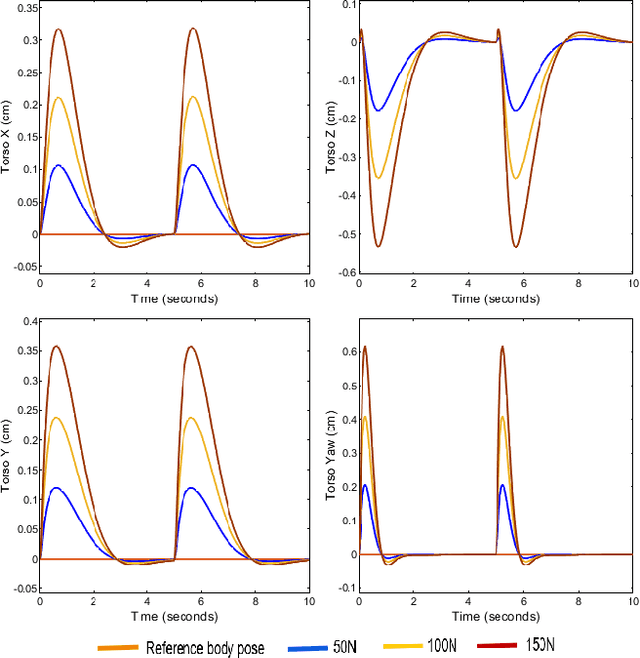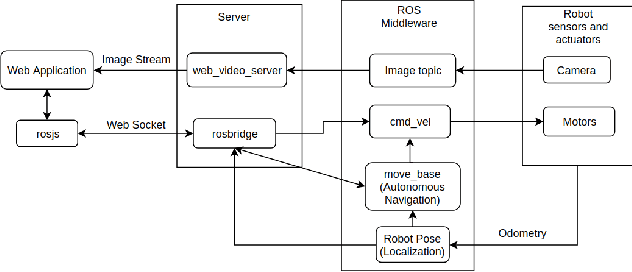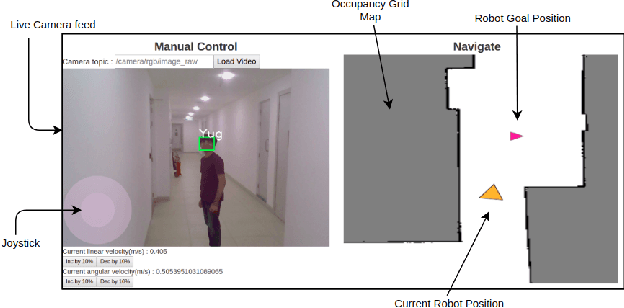Arshad Javed
Terrain Adaptive Gait Transitioning for a Quadruped Robot using Model Predictive Control
Jun 07, 2021



Abstract:Legged robots can traverse challenging terrain, use perception to plan their safe foothold positions, and navigate the environment. Such unique mobility capabilities make these platforms a perfect candidate for scenarios such as search and rescue, inspection, and exploration tasks. While traversing through such terrains, the robot's instability is a significant concern. Many times the robot needs to switch gaits depending on its environment. Due to the complex dynamics of quadruped robots, classical PID control fails to provide high stability. Thus, there is a need for advanced control methods like the Model Predictive Control (MPC) which uses the system model and the nature of the terrain in order to predict the stable body pose of the robot. The controller also provides correction to any external disturbances that result in a change in the desired behavior of the robot. The MPC controller is designed in MATLAB, for full body torque control. The controller performance was verified on Boston Dynamics Spot in Webots simulator. The robot is able to provide correction for external perturbations up to 150 N and also resist falls till 80 cm.
Shared Autonomy in Web-based Human Robot Interaction
Jan 15, 2020

Abstract:In this paper, we aim to achieve a human-robot work balance by implementing shared autonomy through a web interface. Shared autonomy integrates user input with the autonomous capabilities of the robot and therefore increases the overall performance of the robot. Presenting only the relevant information to the user on the web page lowers the cognitive load of the operator. Through our web interface, we provide a mechanism for the operator to directly interact using the displayed information by applying a point-and-click paradigm. Further, we propose our idea to employ a human-robot mutual adaptation in a shared autonomy setting through our web interface for effective team collaboration.
 Add to Chrome
Add to Chrome Add to Firefox
Add to Firefox Add to Edge
Add to Edge